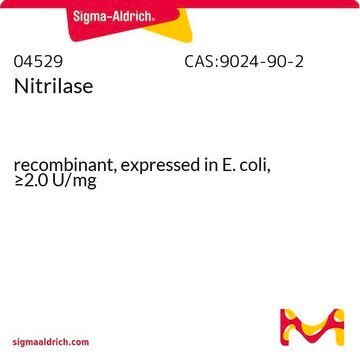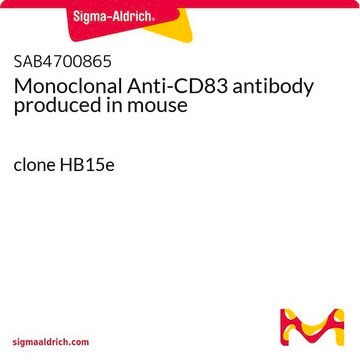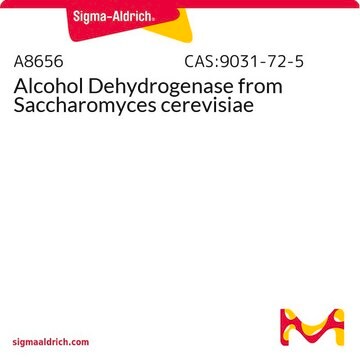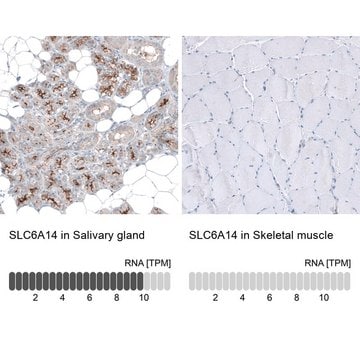79847
Hydroxynitrile Lyase, Arabidopsis thaliana, recombinant from E. coli
≥500 U/mL
Synonym(s):
Hydroxymandelonitrile Lyase, Arabidopsis thaliana, recombinant from E. coli
Sign Into View Organizational & Contract Pricing
All Photos(1)
About This Item
Recommended Products
recombinant
expressed in E. coli
form
liquid
specific activity
≥500 U/mL
storage temp.
−20°C
Application
Hydroxynitrile lyases (Oxynitrilases) are used for various biotransformation processes and to convert a broad range of substrates. They may be used with bacterial nitrilases to generate biocatalysts .
Biochem/physiol Actions
Hydroxynitrile lyases (Oxynitrilases) catalyze the addition of HCN to aldehydes and ketones thereby forming α-hydroxynitriles, also known as cyanohydrins . Product 79847, Hydroxynitrile Lyase from Arabidopsis thaliana , is used to hydrolyze mandelonitrile.
Unit Definition
1 U corresponds to the amount of enzyme which converts 1 μmol mandelonitrile per minte at pH 5.0 and 25°C.
Signal Word
Danger
Hazard Statements
Precautionary Statements
Hazard Classifications
Resp. Sens. 1
Storage Class Code
11 - Combustible Solids
WGK
WGK 1
Flash Point(F)
Not applicable
Flash Point(C)
Not applicable
Personal Protective Equipment
dust mask type N95 (US), Eyeshields, Gloves
Choose from one of the most recent versions:
Certificates of Analysis (COA)
Lot/Batch Number
Don't see the Right Version?
If you require a particular version, you can look up a specific certificate by the Lot or Batch number.
Already Own This Product?
Find documentation for the products that you have recently purchased in the Document Library.
Screening for hydroxynitrile lyases in plants
Hickel, A., Heinrich, G., et al.
Biotechnol. Tech., 11, 55-58 (1997)
White et al.
Plant physiology, 116(4), 1219-1225 (1998-04-29)
In the cyanogenic crop cassava (Manihot esculenta, Crantz), the final step in cyanide production is the conversion of acetone cyanohydrin, the deglycosylation product of linamarin, to cyanide plus acetone. This process occurs spontaneously at pH greater than 5. 0 or
Kathrin Emmi Scholz et al.
Applied and environmental microbiology, 78(14), 5025-5027 (2012-05-01)
Synthesis of chiral cyanohydrins is performed in a monophasic micro-aqueous reaction system using whole recombinant Escherichia coli cells expressing the Arabidopsis thaliana hydroxynitrile lyase (AtHNL). Microscopy studies employing a fusion of AtHNL with a flavin-based fluorescent protein (FbFP) reveal that
Stefanie Baum et al.
Applied and environmental microbiology, 78(1), 48-57 (2011-10-25)
The nitrilase from Pseudomonas fluorescens EBC191 converted 2-methyl-2-phenylpropionitrile, which contains a quaternary carbon atom in the α-position toward the nitrile group, and also similar sterically demanding substrates, such as 2-hydroxy-2-phenylpropionitrile (acetophenone cyanohydrin) or 2-acetyloxy-2-methylphenylacetonitrile. 2-Methyl-2-phenylpropionitrile was hydrolyzed to almost stoichiometric
Our team of scientists has experience in all areas of research including Life Science, Material Science, Chemical Synthesis, Chromatography, Analytical and many others.
Contact Technical Service









